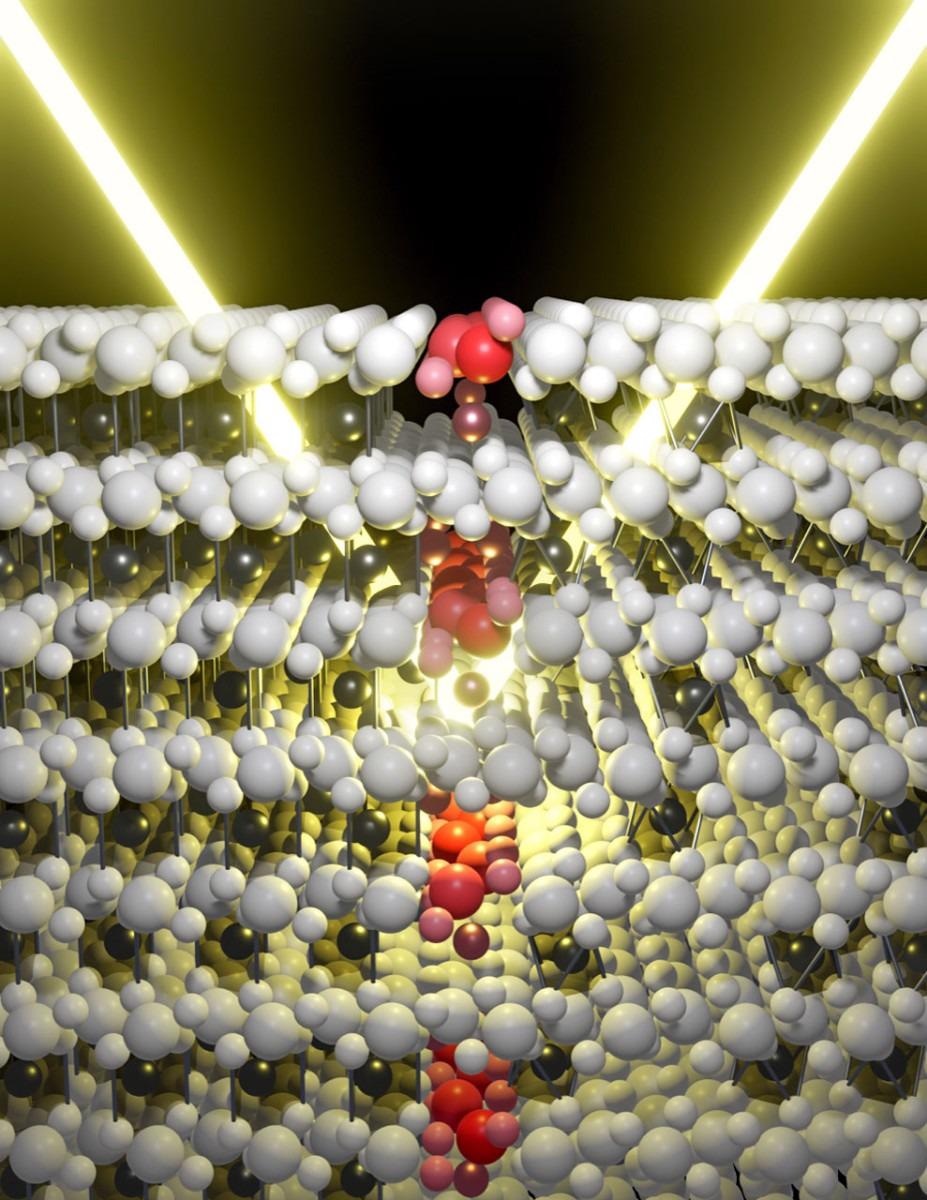The source of a persistent issue restricting the durability of sodium-ion batteries has been uncovered by researchers at Cornell University. This provides manufacturers with new insights for powering the 21st century.
 Artistic representation of the atomic shuffling during the phase transition from P2 (left) and O2 (right) phases, revealed by the operando single particle X-Ray diffraction in sodium-ion batteries. Image Credit: Jason Huang/Provided
Artistic representation of the atomic shuffling during the phase transition from P2 (left) and O2 (right) phases, revealed by the operando single particle X-Ray diffraction in sodium-ion batteries. Image Credit: Jason Huang/Provided
Sodium-ion batteries are considered to be a promising technology as far as the energy grid, electric vehicles and other applications are concerned since they are made from abundant materials that are nonflammable, energy dense and function well in colder temperatures.
However, engineers have yet to perfect the chemistry. Although the lithium-ion batteries discovered in modern electronics could recharge thousands of times, the majority of the variations of sodium-ion batteries can only cycle a small fraction of that.
The poor durability is a result of particular atomic reshuffling in the operation of the battery — the P2–O2 phase transition — as ions traveling via the battery tend to disorder crystal structures and ultimately lead to breakage. While the researchers have gained interest in a phase transition, the mechanisms behind it have been hard to study, particularly during battery operation.
The major aspects of that mechanism have been disclosed by a Cornell group from the laboratory of Andrej Singer, assistant professor of materials science and engineering. The study has been reported in the Advanced Energy Materials journal on February 1st, 2022. Doctoral student Jason Huang is the lead author.
The researchers discovered that as sodium ions move across the battery, the misorientation of crystal layers within the individual particles rises before the layers abruptly align prior to the P2–O2 phase transition.
We’ve discovered a new critical mechanism. During battery charge, the atoms suddenly realign and facilitate that flawed phase transformation.
Andrej Singer, Assistant Professor, Materials Science and Engineering, Cornell University
The team noted the phenomenon following the development of a new X-Ray imaging technique with the help of the Cornell High Energy Synchrotron Source. This enabled them to note, in real-time and on a mass scale, the behavior of single particles inside their battery sample.
The unexpected atomic alignment is invisible in conventional powder X-ray diffraction measurements as it requires seeing inside individual cathode nanoparticles. Our unprecedented high-throughput data allowed us to reveal the subtle, yet critical, mechanism.
Andrej Singer, Assistant Professor of Materials Science and Engineering, Cornell University
The discovery guided the researchers to propose new design options for the kind of sodium-ion battery they were using, which they plan to examine in future research projects. One solution is to alter the battery chemistry to initiate a strategic disorder to the particles prior to the flawed transition phase, according to Huang.
Huang added, “By changing the ratios of our transition metals, in this case, nickel and manganese. We can introduce a bit of disorder and potentially reduce the ordering effect we observed.”
Huang stated the new characterization method can be utilized to disclose complicated phase behaviors in other nanoparticle systems, but its best application might remain in next-generation energy storage technologies.
We’re pushing the frontiers of sodium-ion batteries and what we know about them. And using this knowledge to design better batteries will help to unlock the technology for practical applications in the future.
Jason Huang, Study Lead Author and Doctoral Student, Cornell University
Journal Reference:
Huang, J. J., et al. (2022) Disorder Dynamics in Battery Nanoparticles During Phase Transitions Revealed by Operando Single-Particle Diffraction. Advanced Energy Materials. doi.org/10.1002/aenm.202103521.